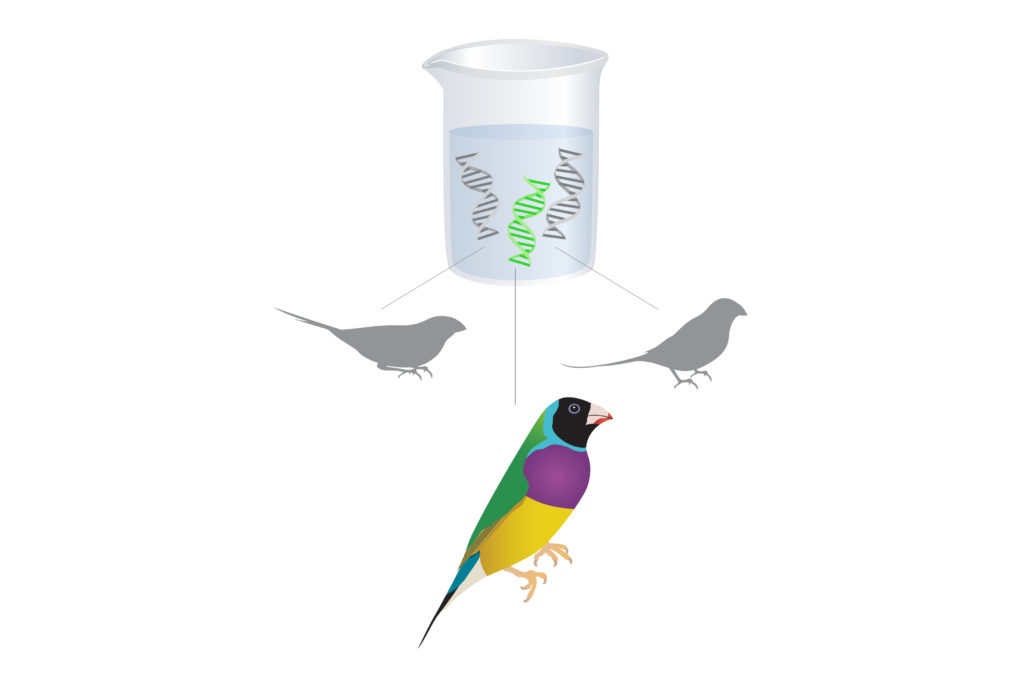26 November 2018
Hub researchers from Charles Darwin University are at the forefront of using new eDNA technology to detect wildlife in the Top End, with the endangered Gouldian Finch (Eurythura gouldiae) as the test case.
Research has shown that tests can detect “environmental DNA”, known as eDNA, in soil and water that fauna frequent. This research approach can help monitor threatened animals, pests and species of high cultural value.
Research Institute for the Environment and Livelihoods Director Professor Karen Gibb co-led the team in this ground-breaking three-stage project.
“In collaboration with Curtin University, a DNA technique was developed to detect the Gouldian Finch – and rule out other species – to track remaining finch populations more accurately,” Professor Gibb said.
“Through extensive analysis, researchers identified and optimised DNA probes that bound to Gouldian Finch DNA but did not bind to the DNA of two other finch species.”

This project is developing eDNA methods to specifically detect the Gouldian Finch even when other finch species are present.
Professor Gibb said the project team then conducted a controlled field experiment to sample eDNA in water in aviaries at the Territory Wildlife Park.
“The probe proved extremely sensitive and provided a positive result using DNA extracted from the drinking water of Gouldian Finches but not from other bird species,” she said.
“We tested how long the eDNA could be detected in the water after the finches last had a drink and if environmental factors such as turbidity made a difference.”
NT Government’s Department of Environment, Parks & Water Security researchers are now working with CDU to test the technique on waterholes in the Top End.
Although eDNA surveillance is set to be a game-changer in biodiversity conservation and land management, managers will still use traditional methods until the new method can also assess bird numbers.
With the Gouldian Finch flourishing in captivity, thanks to its iridescent beauty, this research will inform strategies to make sure these dazzling birds continue to illuminate Outback skies for generations to come.
This CDU project is supported through funding from the Australian Government’s National Environmental Science Program and the NT Government.
See the project start-up factsheet here and the project page here.
Want to know more about the Resilient Landscapes Hub's activities and our research into practical solutions to environmental problems? Stay informed about activities, research, publications, events and more through the Hub newsletter.